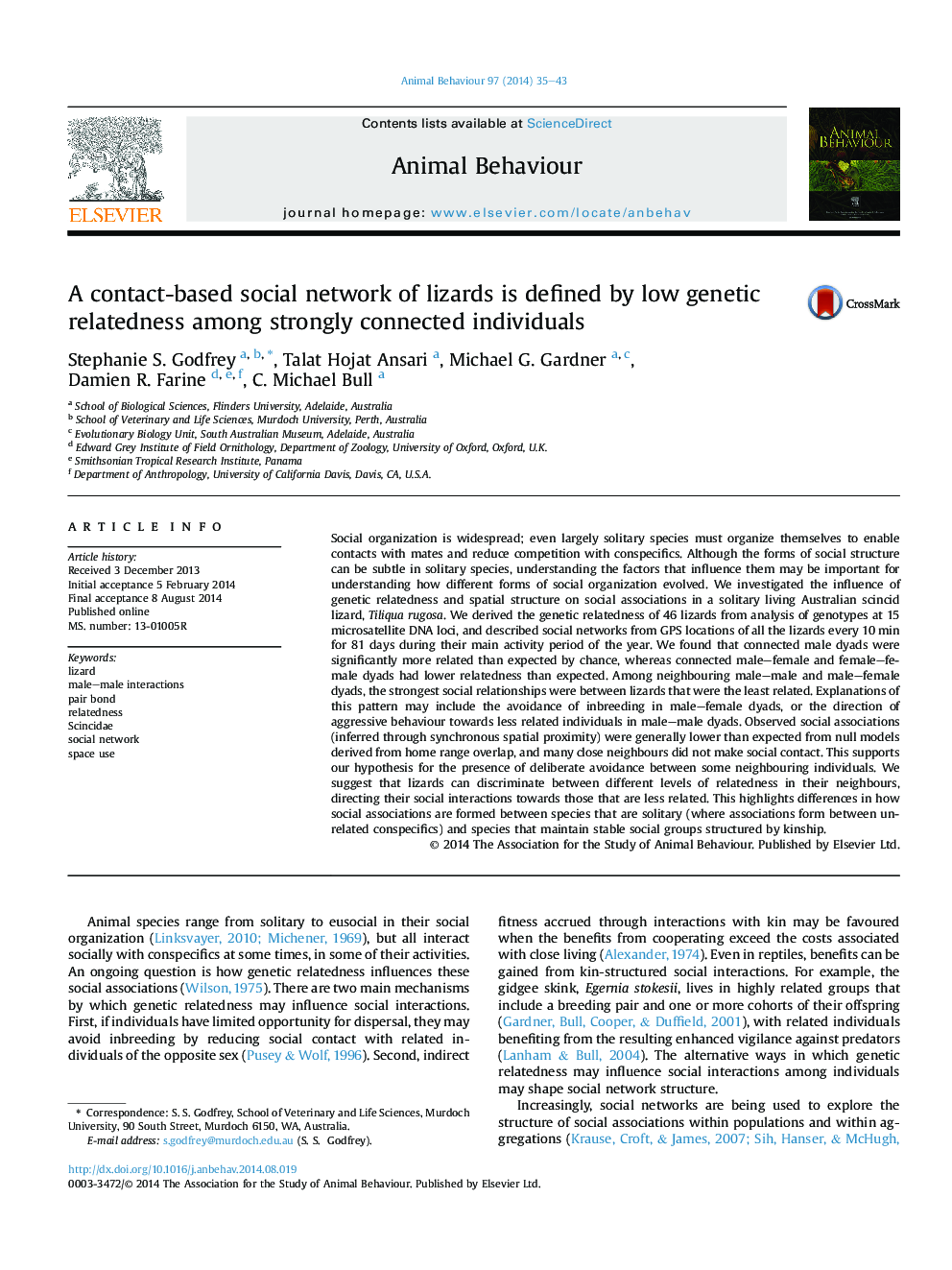| کد مقاله | کد نشریه | سال انتشار | مقاله انگلیسی | نسخه تمام متن |
|---|---|---|---|---|
| 8490270 | 1552231 | 2014 | 9 صفحه PDF | دانلود رایگان |
عنوان انگلیسی مقاله ISI
A contact-based social network of lizards is defined by low genetic relatedness among strongly connected individuals
ترجمه فارسی عنوان
یک شبکه اجتماعی مبتنی بر مخاطب از مارمولک ها با وابستگی ژنتیکی کم در میان افراد بسیار متصل ارتباط دارد
دانلود مقاله + سفارش ترجمه
دانلود مقاله ISI انگلیسی
رایگان برای ایرانیان
کلمات کلیدی
موضوعات مرتبط
علوم زیستی و بیوفناوری
علوم کشاورزی و بیولوژیک
علوم دامی و جانورشناسی
چکیده انگلیسی
Social organization is widespread; even largely solitary species must organize themselves to enable contacts with mates and reduce competition with conspecifics. Although the forms of social structure can be subtle in solitary species, understanding the factors that influence them may be important for understanding how different forms of social organization evolved. We investigated the influence of genetic relatedness and spatial structure on social associations in a solitary living Australian scincid lizard, Tiliqua rugosa. We derived the genetic relatedness of 46 lizards from analysis of genotypes at 15 microsatellite DNA loci, and described social networks from GPS locations of all the lizards every 10Â min for 81 days during their main activity period of the year. We found that connected male dyads were significantly more related than expected by chance, whereas connected male-female and female-female dyads had lower relatedness than expected. Among neighbouring male-male and male-female dyads, the strongest social relationships were between lizards that were the least related. Explanations of this pattern may include the avoidance of inbreeding in male-female dyads, or the direction of aggressive behaviour towards less related individuals in male-male dyads. Observed social associations (inferred through synchronous spatial proximity) were generally lower than expected from null models derived from home range overlap, and many close neighbours did not make social contact. This supports our hypothesis for the presence of deliberate avoidance between some neighbouring individuals. We suggest that lizards can discriminate between different levels of relatedness in their neighbours, directing their social interactions towards those that are less related. This highlights differences in how social associations are formed between species that are solitary (where associations form between unrelated conspecifics) and species that maintain stable social groups structured by kinship.
ناشر
Database: Elsevier - ScienceDirect (ساینس دایرکت)
Journal: Animal Behaviour - Volume 97, November 2014, Pages 35-43
Journal: Animal Behaviour - Volume 97, November 2014, Pages 35-43
نویسندگان
Stephanie S. Godfrey, Talat Hojat Ansari, Michael G. Gardner, Damien R. Farine, C. Michael Bull,
